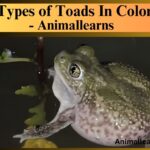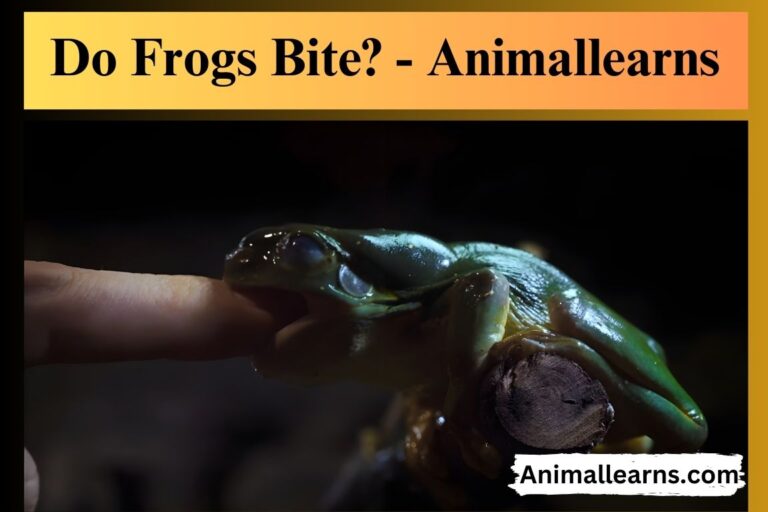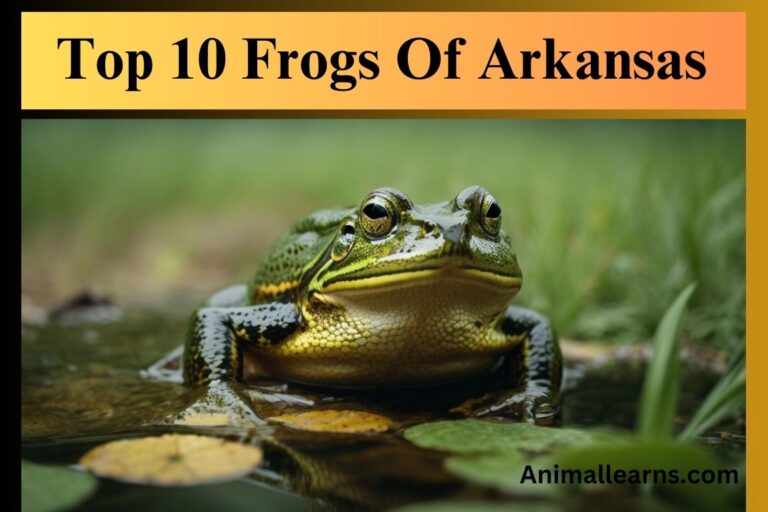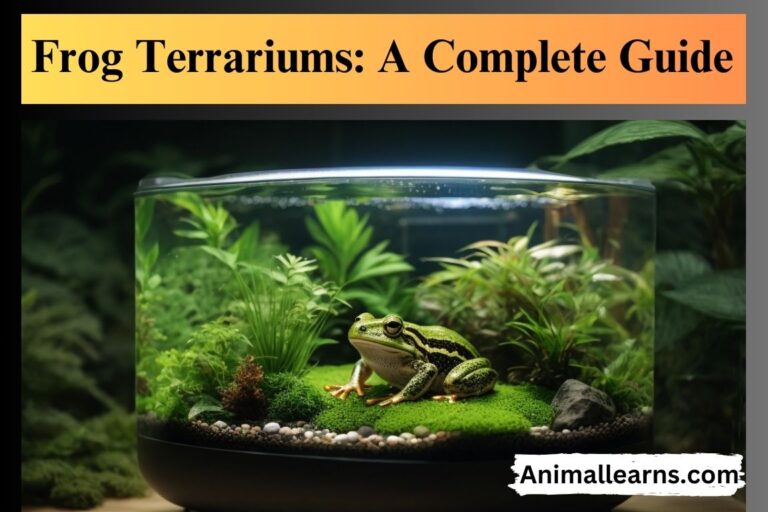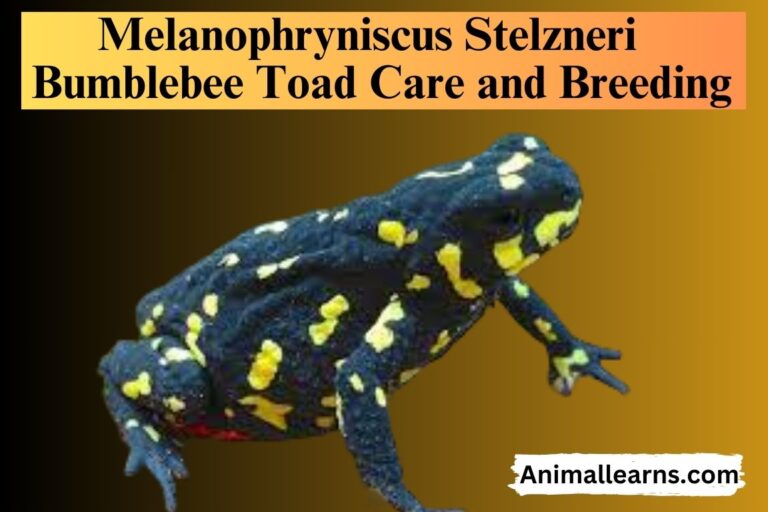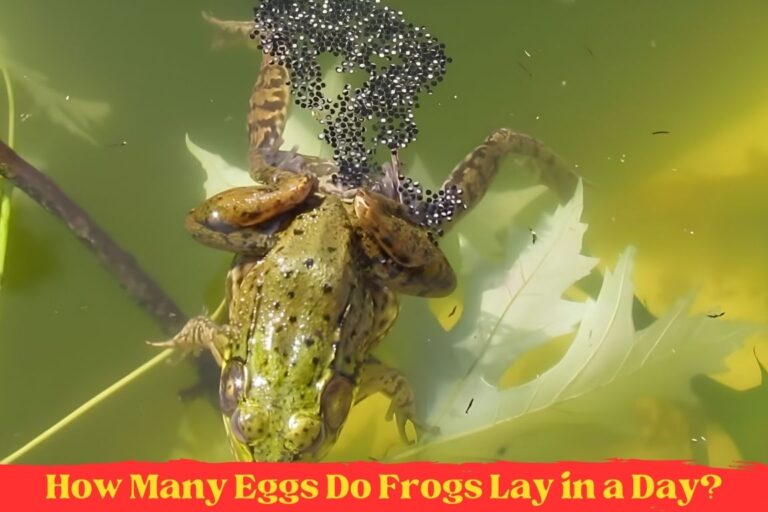12 Poisonous Frogs and Toads of Wisconsin (With Pictures)

Frogs and toads of Wisconsin inhabit a diverse range of ecosystems, from lush marshlands to serene lakeshores, contributing to the rich biodiversity of the region.
There is only one species of toad and a limited range of frogs in Wisconsin. Fortunately, it’s not difficult to locate the majority of these Wisconsin frogs and toads anywhere in the state.
You can check my Frog Identification page to discover how to get in touch with me if you need assistance identifying a specific Wisconsin frog or toad and are unable to do so from the information on the page.
Frogs of Wisconsin
Contents
In Wisconsin, there are 11 species of frogs. They belong to two families: tree frogs (Hylidae) and real frogs (Ranidae).
Tree Frog Family – Hylidae
The family of tree frogs is not made up entirely of tree dwellers. A large number of them are on the ground.
Eastern Gray Tree Frog
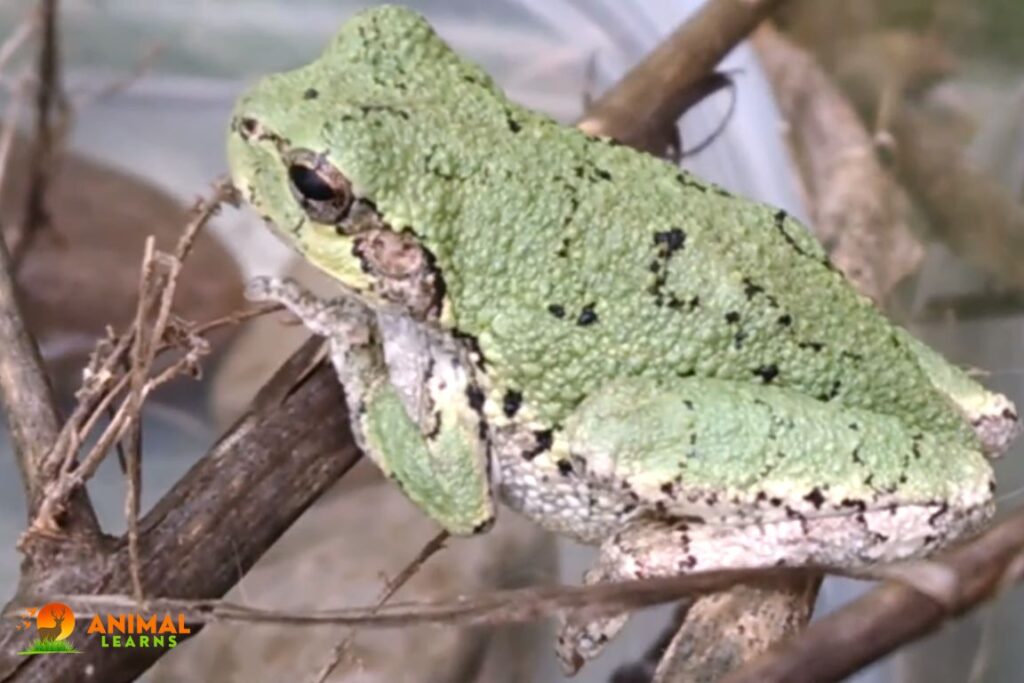
- Scientific Name:Hyla veriscolor
- Family: Hylidae
- Size: 3.18-5.22 cm
- Location: Canada and the United States of America
- Breeding Season: End of April to early August
Eastern Gray Treefrogs range in size from 3.18-5.22 cm on average. The skin of Eastern Gray Treefrogs is extremely rough and warty, and their huge toe pads are extremely sticky due to the production of slimy mucus.
When they are adults, their hue can vary from green to brown to gray, and they have many huge, black spots on their backs. Also, under their eyes, there’s usually a luminous area with a black border.
When under attack, Eastern Gray Treefrogs can deceive predators by flashing brilliant yellow or orange pigmentation on the inner of their thighs. Treefrogs, male and female, have a similar appearance, with the exception that the males’ chins have a significantly darker underside.
The Nearctic is the only natural habitat of Eastern Gray Treefrogs. They are absent from southern Florida and Maine, but they are widespread in the eastern United States and southern Ontario. They may be found in Texas, Oklahoma, Kansas, Nebraska, North and South Dakota, and other western states.
Copes Gray Tree Frog

- Scientific Name: Hyla chrysoscelis
- Family: Hylidae
- Size: 2 inches (5 cm)
- Locations: United States and Canada
- Breeding Season: End of April to early August
The treefrog species known as Cope’s gray (Dryophytes chrysoscelis) is native to both North America and Europe. Its geographic range is almost entirely shared with the gray tree frog (Dryophytes versicolor), from which it is nearly impossible to differentiate.
Both species have varying colors that range from mottled gray to gray-green, much like tree bark. These are forest tree frogs, yet on occasion they can go into open spaces in search of a breeding pond. The adult Cope’s Gray Tree frog is a medium-sized frog that typically grows to a length of 1-2 inches (2.5–5 cm).
Breeding sites for Cope’s Gray Tree frogs include riparian wetlands, fishless ponds, and flooded areas close to shelterbelts and woodlands. After migrating to these wetlands for breeding, the adults retreat to highland, wooded environments, where they are harder to find.
Spring Peeper Frog
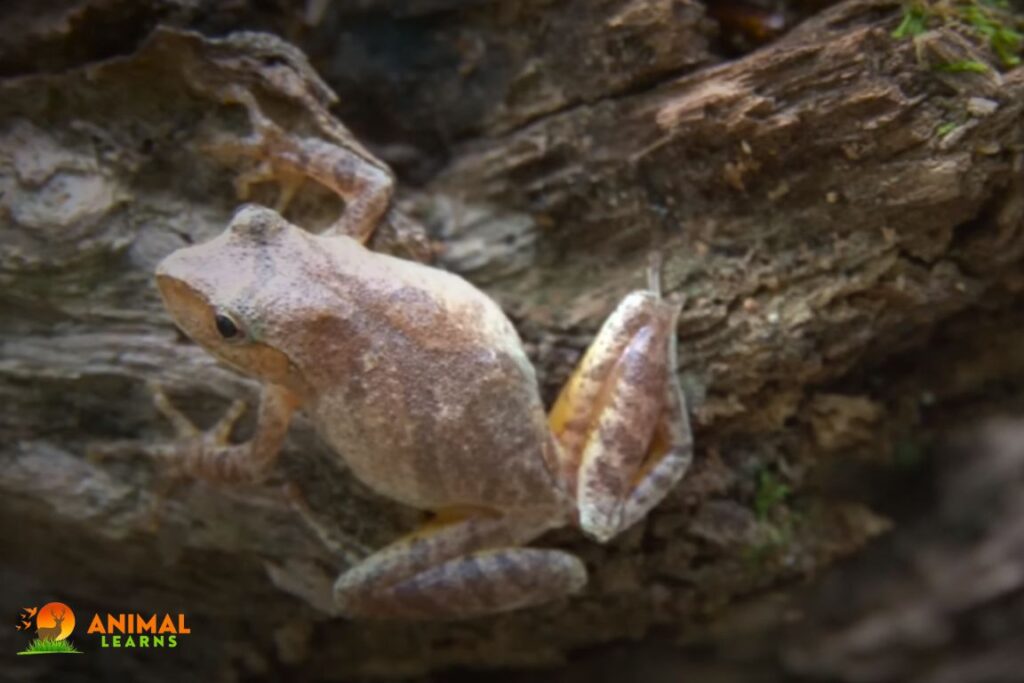
- Scientific Name:Pseudacris crucifer
- Family: Hylidae
- Size: 0.75 to 1.25 inches (19.05 – 31.75 mm)
- Locations: United States and Canada
- Breeding Season: March to early June
A little chorus frog, the spring peeper is frequently seen on the forest floor or low on tree trunks. Because of their tiny size, they might be difficult to locate; however, in the spring, when they migrate to makeshift ponds to reproduce, they become more visible. They have an x on their back, which helps to differentiate them from Boreal Chorus and Cricket frogs.
Boreal Chorus Frog
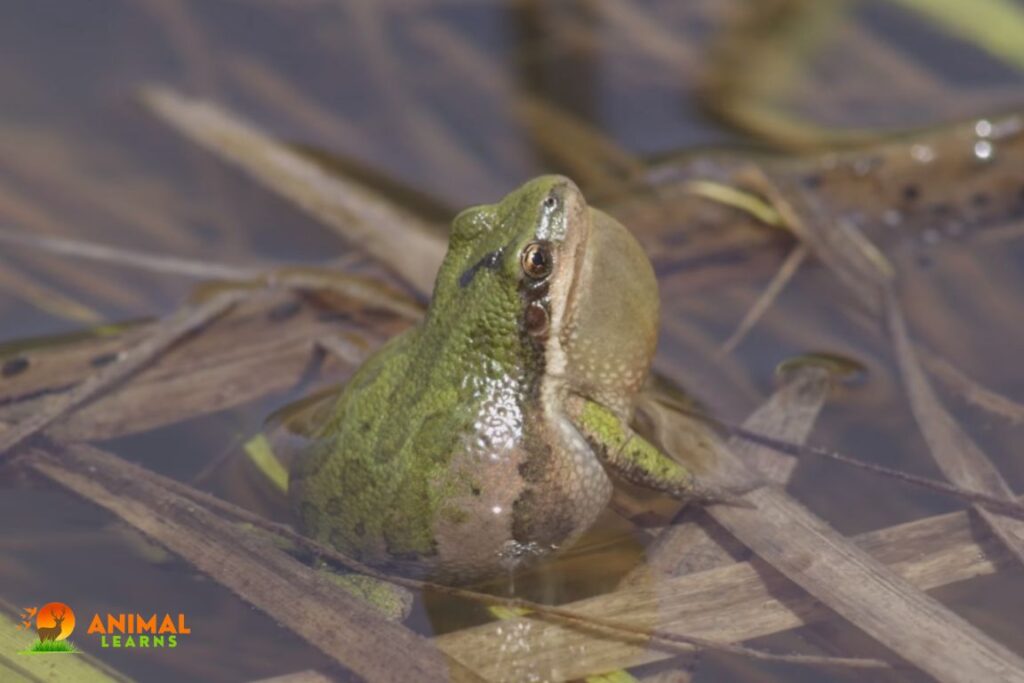
- Scientific Name:Pseudacris maculate
- Family: Hylidae
- Size: 1.9-3.8 cm/0.75-1.5 in
- Locations: United States and Canada
- Breeding Season: March to August
The Boreal Chorus Frog is a tiny species of Chorus Frog with colors ranging from olive, tan, red, and brown. They resemble the Spring Peepers a lot, except instead of an X on their back, they have three lines that go down them. It is the species that breeds the longest, yet it is among the earliest frogs to begin reproducing in the spring when the pond ice melts.
Blanchard’s Cricket Frog
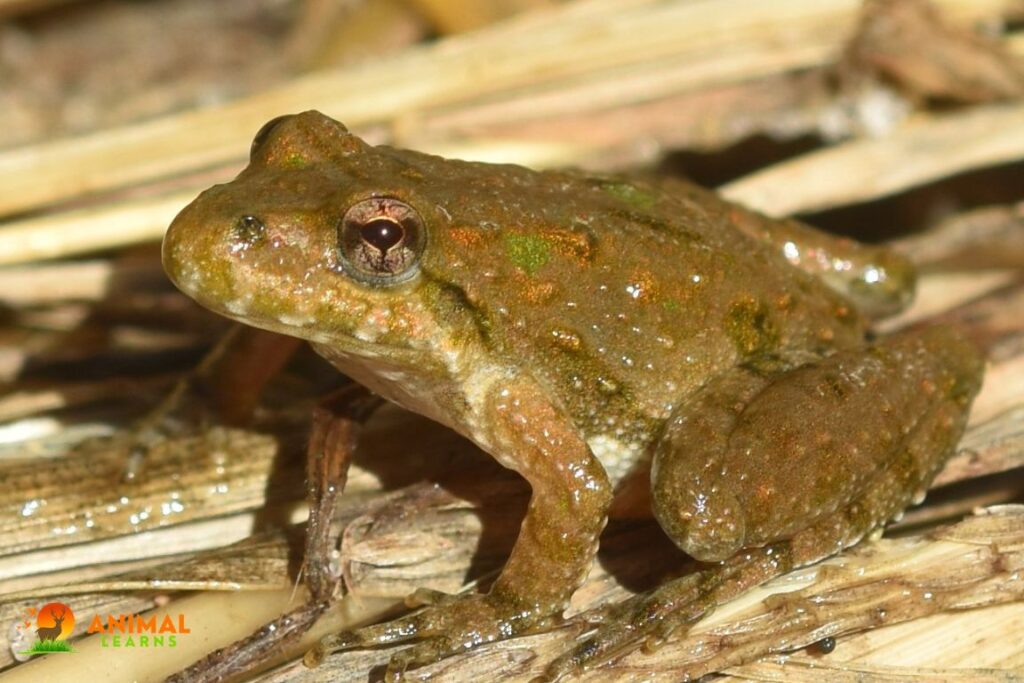
- Scientific Name: Acris blanchardi
- Family: Hylidae
- Size: 6 – 1.5 inches (1.6-3.8 cm)
- Locations: United States
- Breeding Season: May to end of July
Tan, brown, or green are the possible colors of the warty, little Blanchard’s Cricket Frog. They have a black stripe down their thighs and a dark triangle between their eyes.
In Wisconsin, the Blanchard’s Cricket Frog is listed as an endangered species. They may be distinguished from the Spring Peeper and Boreal Chorus Frog by their lack of an X or stripes on their back.
True Frog Family – Ranidae
The True Frog Family, Ranidae, represents a significant portion of the local amphibian population, contributing to the rich diversity of frogs and toads of Wisconsin.
American Bullfrog
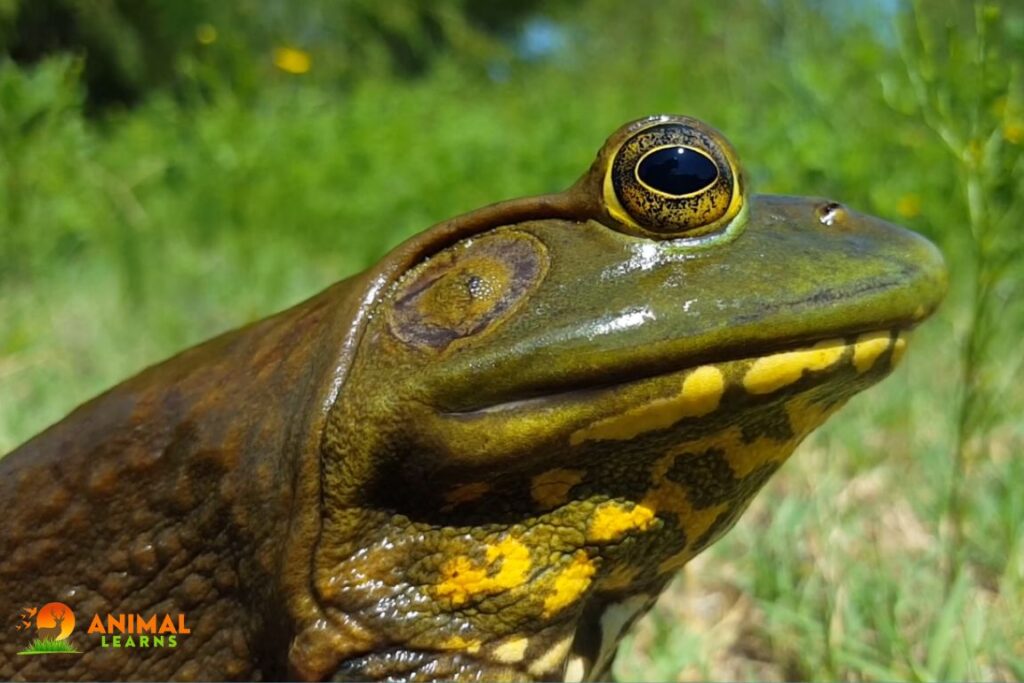
- Scientific Name: Rana Catesbeiana
- Family: Ranidae
- Size: 4.3 – 7 inches
- Locations: Canada, Mexico, and the United States of America
- Breeding Season: June and July
The biggest frog in the state is the American Bullfrog. They are located next to lakes, streams, and sizable ponds that are permanent bodies of water. The males of the species have brilliant yellow necks once they are sexually mature. Although they lack a dorsal ridge along the length of their back, they resemble green frogs in many ways. It encircles their tympanum.
Being aquatic, these animals dislike living in densely populated places.
Their preference is:
- Lakes
- Sloughs
- Marshes
- Ponds
- Slow-moving streams
- Slow river backwaters
- Cattle tanks
- Irrigation canals
Green Frog
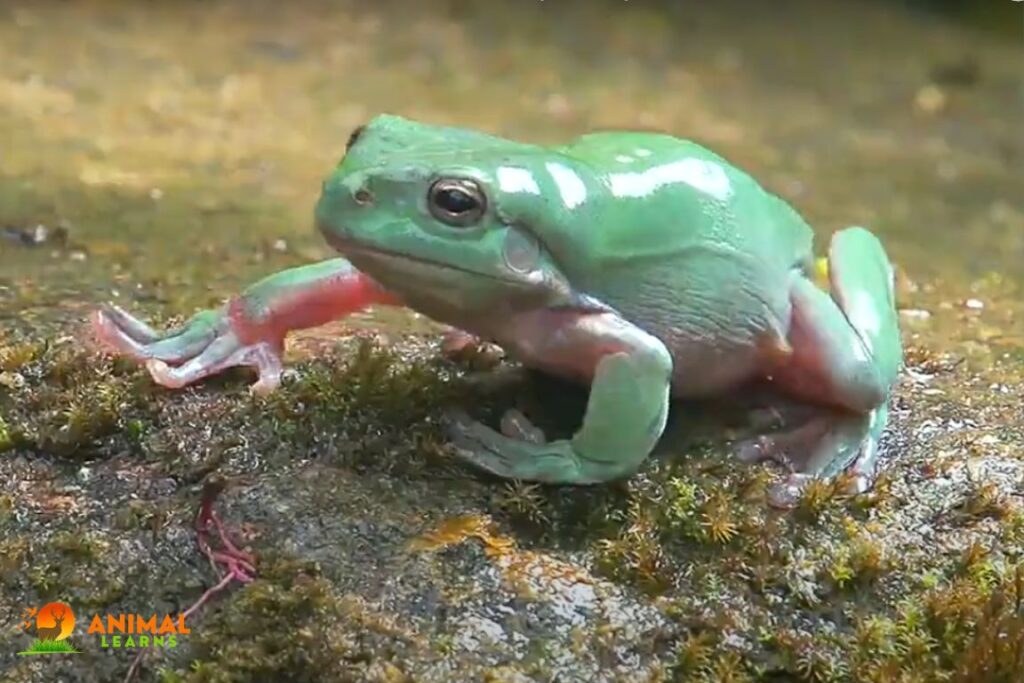
- Scientific Name: Rana clamitans
- Family: Ranidae
- Size: 2-4 inches
- Locations: United States & Canada
- Breeding Season: May to August
It is determined that the green frog is a big frog. It has been observed that females are larger than males in size. In females, the tympanum and the eye are about the same size. The tympanum, or ear drum, of male frogs, looks even larger than their eyes, and they also have a vivid yellow neck.
The male green frog’s distinctive and loud cry is exactly like the sound of a banjo string being plucked. Usually, only one note is generated. The male frogs use their cry to protect their area and to communicate from within it.
Mink Frog
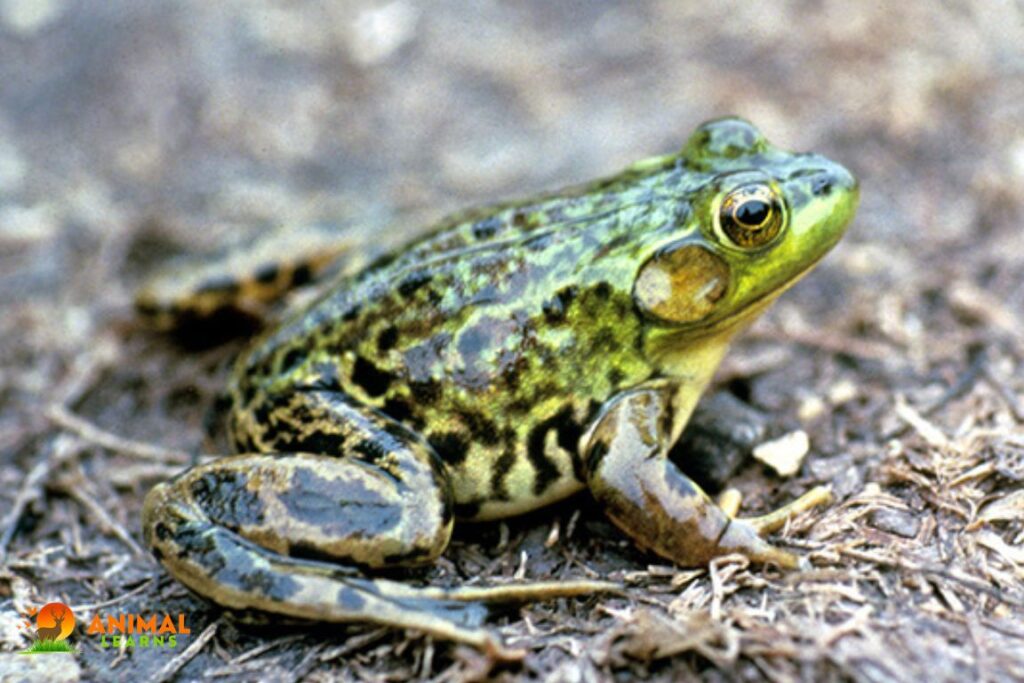
- Scientific Name: Rana septrentionalis
- Family: Ranidae
- Size: 1.9 – 3 inches
- Locations: Canada and the United States of America
- Breeding Season: June to August
The stench that the mink frog emits when touched is how it got its name. The majority of their time is spent in and around streams, ponds, and lakes. Compared to the other frogs, the Mink Frog has a marbled appearance. In Wisconsin, they are classified as a species of special concern.
Northern Leopard Frog
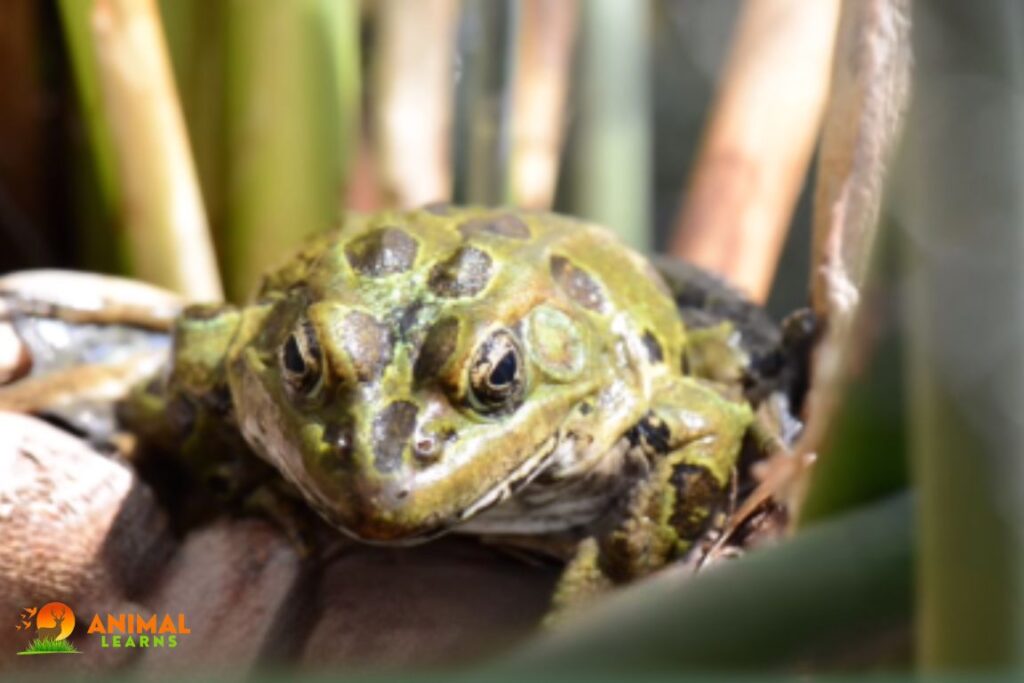
- Scientific Name: Rana pipiens
- Family: Ranidae
- Size: 2 – 4.3 inches
- Native Locations: Canada and the United States of America
- Breeding Season: April to early June
A medium- to large-sized, semi-aquatic frog species is the Northern Leopard Frog. They have quite huge spots all over their bodies and range in color from dark brown to slim green. The state still lists them as common, although their population has drastically dropped.
Wood Frog
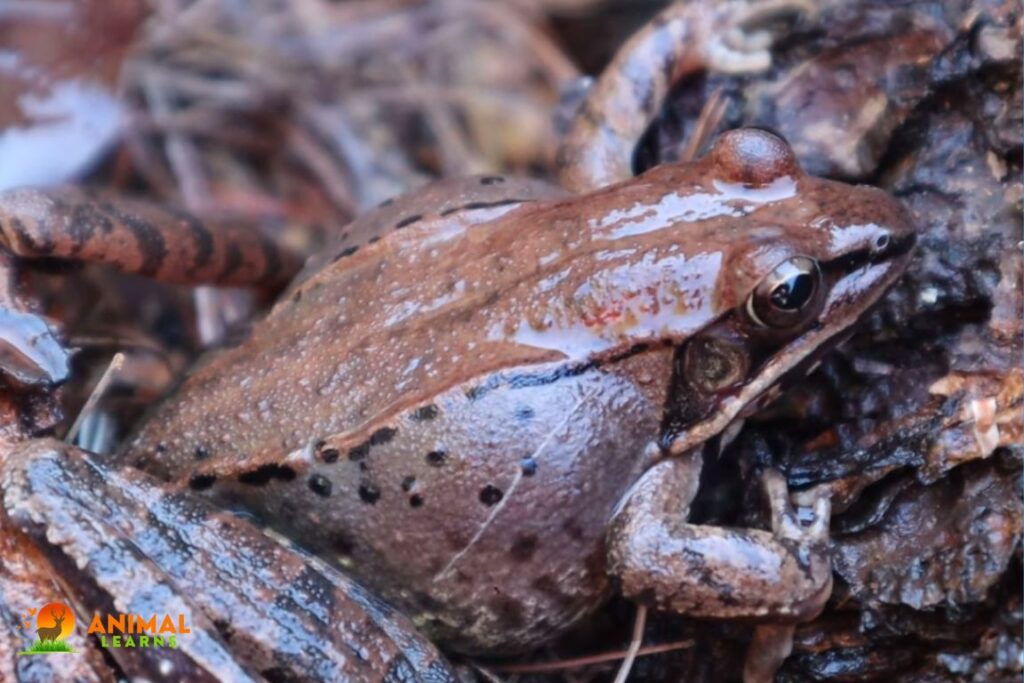
- Scientific Name: Rana sylvatica
- Family: Ranidae
- Size: 3.2 inches
- Locations: Canada and the United States of America
- Breeding Season: March and April
The Wood Frog ranges in size from little to medium. Their eyes are dark, like raccoons, and their hue varies from red to brown to silver. The Wood Frog has the ability to freeze solid throughout the winter and then defrost in the spring. They begin to breed when the pond ice melts in late March or early April. They are frequently located in the forests, distant from any sources of water, following the mating season.
Pickerel Frog

- Scientific Name: Rana palustris
- Family: Ranidae
- Size: 1.75 – 3.5 inches
- Native Locations: Canada and the United States of America
- Breeding Season: May and June
The Pickerel Frog ranges in size from medium to giant. There are rectangular compartments inside their dorsal ridge, which extends from their eye to their back. The state of Wisconsin has designated them as a Special Species of Concern.
Toads of Wisconsin
True Toad Family – Bufonidae
The ordinary toads you are familiar with are the True Toads. They have parotoid glands behind their eyes and warts down the length of their back. Avoid eating these toads and always wash your hands after handling them as they release poisons.
American Toad
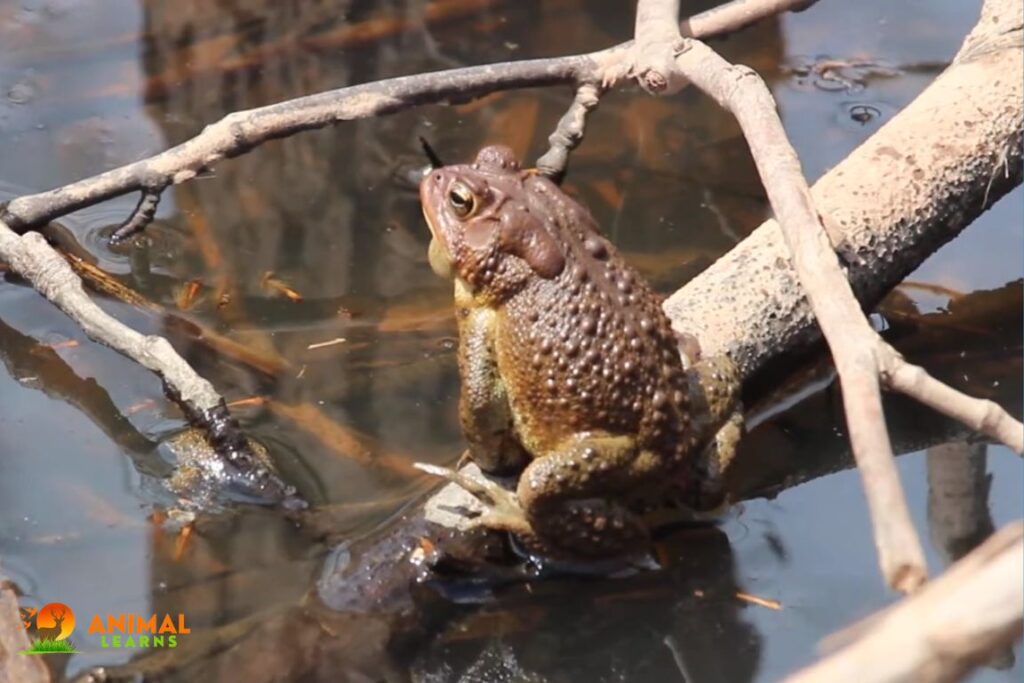
- Scientific Name: Anaxyrus americanus
- Family: Bufonidae
- Size: 2 – 4.3 inches
- Native Locations: Canada and the United States of America
- Breeding Season: May through August
The American Toad is a medium-sized toad that can have patches of black, gray, or red coloring in addition to its predominant brown hue. Its skin is rough and warty. Their underbelly is spotted. The parotid gland of the American toad is not in contact with it or attached to it by a spur. The toads are found almost everywhere, even in cities. In Wisconsin, these are the only toads that exist.
Wisconsin boasts a vibrant ecosystem for frogs and toads, with various species thriving in its lakes, ponds, and marshes. From the American toad to the American Bullfrog, the state offers ample opportunities for enthusiasts to observe and appreciate the diversity of frogs and toads of Wisconsin natural habitats.
FAQs
What type of toads live in Wisconsin?
Only one toad species lives in Wisconsin – the American toad.
What is the largest frog in Wisconsin?
An amphibian that may be found in Wisconsin’s lakes, ponds, and streams is the American Bullfrog. It’s even audible and seen near Lake Wingra!
Where can I find frogs in Wisconsin?
Look near water bodies like ponds, lakes, or marshes. Specific locations vary by species.
What do frogs eat in Wisconsin?
The majority of frogs consume insects, which include huge locusts, spiders, and fruit flies as well as aphids. Certain frogs consume aquatic insects such as water beetles or dragonfly larvae, while others consume millipedes, snails, and slugs.
What is the difference between a frog and a toad?
Toads have dry, warty skin and live mainly on land, while frogs have smooth, moist skin and spend more time in water.


